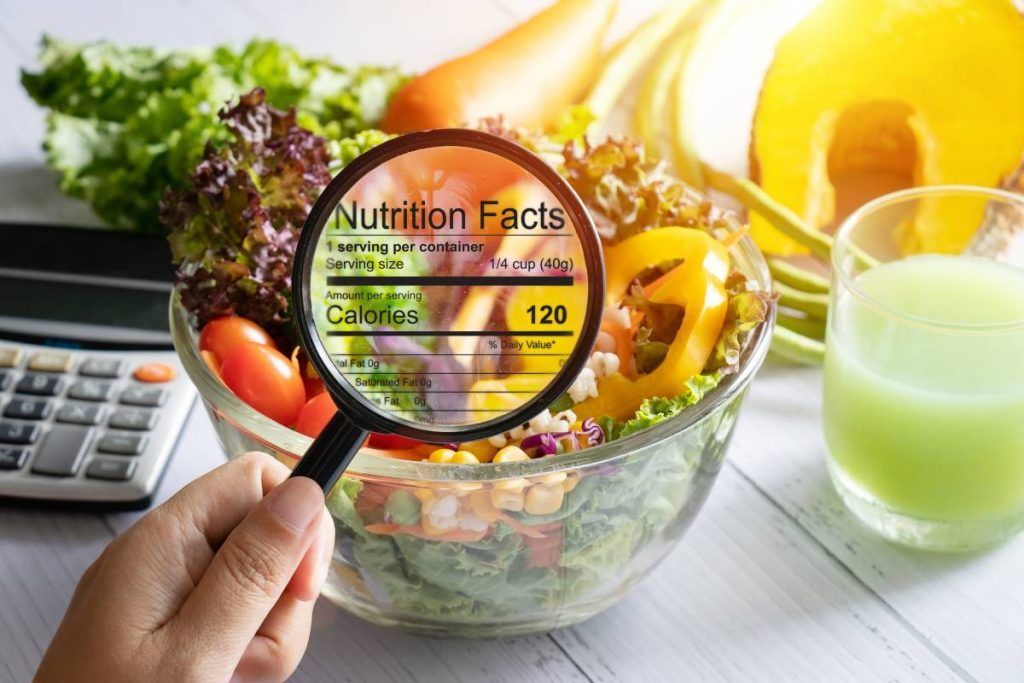
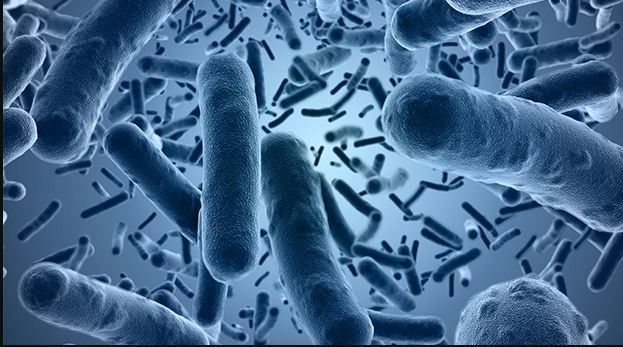


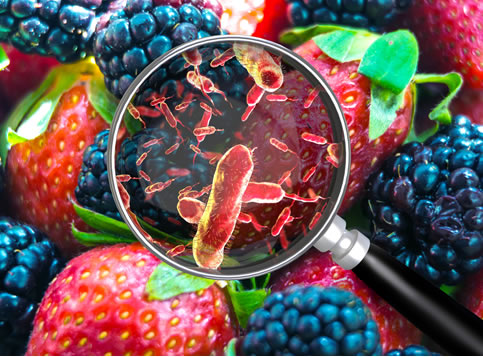
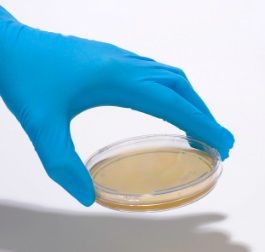
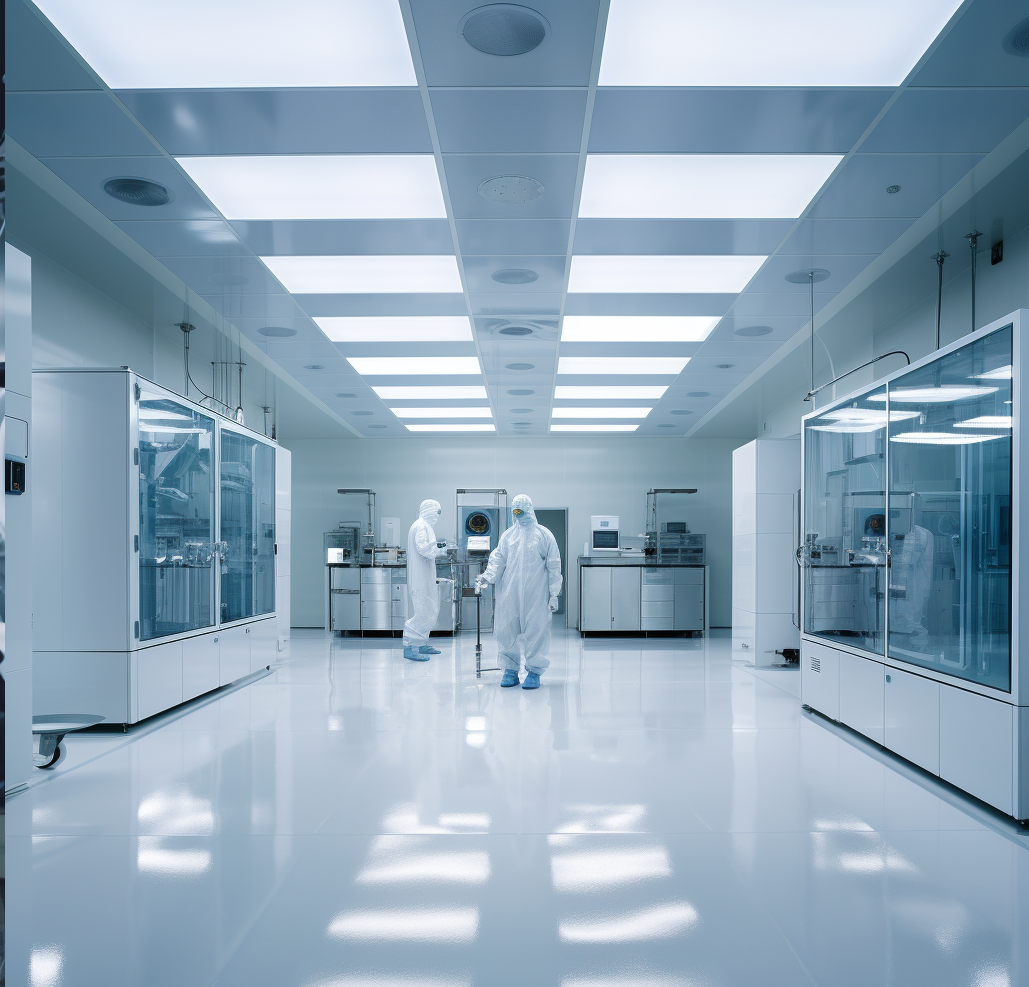
Environmental monitoring is a tool that scientists typically use to better understand environmental conditions, determine its quality, and establish parameters.
This is especially helpful when it comes to quantifying the type of impact an activity has on the environment.
For example, if a pharmaceutical company has established a lab near a national park, environmental monitoring is important to assess what impact this lab has on the environment. This also helps develop policies in order to restrict activities that could have a negative impact on the environment.
Specifically, environmental monitoring microbiology measures the quality of biological presence in the area, like bacteria and organisms.
Data samples are collected and measured over time to determine what changes are happening within the microbial genetics. Upward and downward changes can show the effect an activity has on the environment.
There are many benefits of environmental monitoring. The main purpose of environmental monitoring is to mitigate the impact a company’s activities may have on the environment.
Environmental monitoring involves checking the soil, atmosphere, and water in an area to enter in an Environmental Data Management System (EDMS). From here, scientists can analyze the consolidated date to create actionable procedures to ensure the safety of the environment.
Environmental monitoring microbiology tests the microbiological quality in a controlled area to see if it’s acceptable. Changes are also monitored over time.
With microbiological testing services and microbiological analysis., scientists will typically use water sample testing,
air quality testing, and surfaces testing in a clean area. This helps them understand what type of microorganisms are present to better assess how nearby activities are affecting the environment.
An environmental monitoring program involves a collection of microbiological testing services that targets biological organisms.
It does not reprimand the problems in an area; instead, it uses data to help people determine if they are following policies, such as food safety plans or pharmaceutical production guidelines.
An environmental monitoring microbiology program is important because it can help find pathogens before contamination happens, determine the effectiveness of sanitation procedures, provide water sample testing, ensure compliance, and much more.
In general, environmental monitoring techniques involve a combination of measuring air, soil, food and water quality.
For air quality testing, data is gathered using Geographic Information Systems from different sources. Different environmental networks are implemented into various forms of air dispersion, like emissions, meteorological, and topographic. This data is used to detect the presence of any potential air pollutants.
Water sample testing is quite simple. It involves remote sensing techniques to detect the potential presence of chemical, radiological, and microbiological contaminants in the water.
Soil requires gathering multiple samples of composites to check for acidification, microbial genetics, and erosion.
Environmental monitoring of cleanrooms can be an important aspect of pharmaceutical production guidelines. In regard to the production of sterile products and drug substances, ensuring the environment is low risk is crucial.
This involves air quality testing in the cleanroom, to check for the presence of particles or contaminants. The environmental monitoring techniques include looking at disinfectant practices, unusual airflow, physical temperature fluctuations, and staff training.
Learn More:
Complete Guide to Mastering Cleanrooms
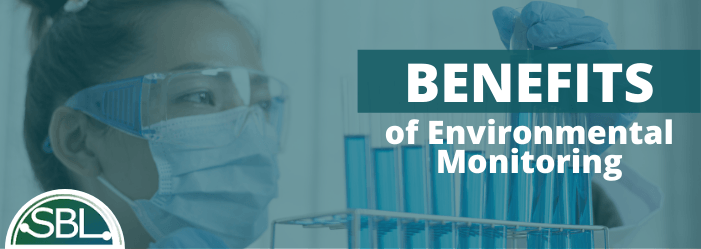
There are many benefits of environmental monitoring. The general purpose of environmental monitoring microbiology is to understand if the quality of our environment is getting better or worse.
There are different situations where this is important, but ensuring compliance with government regulations like the CDC is a major one. Risks to wildlife, natural habitats, or even humans are especially restricted by the government in all industries across the board.
Different environmental monitoring techniques pertain to different industries and locales. Techniques like water sample testing and air quality testing show how environmental monitoring microbiology benefits the environment.
Waste poses a big risk to the environment, through spilt hazardous materials and loss of resources. Waste monitoring is important because it measures the pressure on the environment created by the total amount of generated waste.
The waste intensity, organized by waste category, helps scientists determine how to respond to hazardous materials threatening the environment.
Remote sensing is another technique that monitors the effects of pollutants on large spaces over long periods of time. Understanding these seasonal cycles through Earth observation can help us better respond to the changes in our environment and how microbial genetics react to pollutants.
According to the CDC, each year roughly 48 million people get sick and 3,000 die from food-borne illnesses. This is why environmental monitoring microbiology programs are important to help combat the growing issue of food-borne illnesses.
One of the many benefits of environmental monitoring is that it helps verify sanitation programs for foods. It also provides data on what personnel practices and food handling procedures are most proactive. Most significantly, it provides data about spoilage organisms, pathogens, and microbial genetics that cause outbreaks.
A well-known threat amidst food safety is listeria, like the recent "Dole Salad" listeria outbreak in 2022.
Listeria's a persistent micro bacteria present in soil, water, and decaying vegetation. It can even survive and grow in refrigerated temperatures, a big reason listeria causes about 1,600 food-borne illnesses in the U.S annually.
Pharmaceutical production guidelines are crucial for companies in this industry and are strictly monitored by the government. Microbiological testing services help test the quality of different pharmaceutical facilities.
Samples are collected from labs, which are followed by isolation and identification. It is known that over 21 bacterial and fungal species can be present in a pharmaceutical if it is not properly tested.
That is why environmental monitoring biology is helpful in order to spot groups of microbial genetics and bacteria like
Staphylococci and
Bacilli.
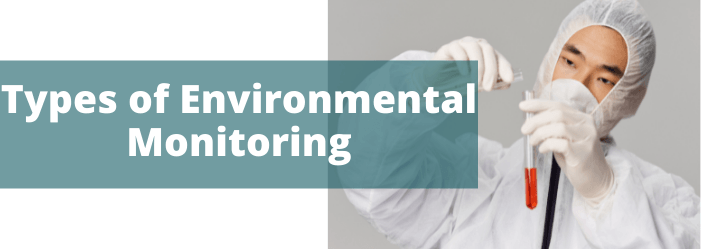
The costs of environmental monitoring services depend on the type needed for that situation. When companies prepare an environmental impact assessment (ESA), they are evaluating the negative effects that a future project could have on the environment.
Knowing this can help them determine what microbiological testing services best suit their needs. Some of the different types of monitoring take a look at indicators like pollutants in the air, contaminants, in water, noise, etc.
So what are the types of environmental monitoring?
Air pollutants are one of the biggest factors affecting human health. Air quality testing can monitor environmental pollutants using sensors and software.
The sensors measure things like nitrogen dioxide, carbon monoxide, and ozone. Air quality is also monitored with stations that collect air particle samples for testing.
Considering how much water comprises the Earth’s biomes, environmental monitoring of water is essential to our livelihoods.
This form of testing ensures that bodies of water are clean, sanitary, and safe to drink or use for production which is also important for marine life to exist.
Water sample testing connects sensors deep into oceans, lakes, and ponds to communicate when thresholds are reached. Levels of nitrates, pH, and chemical contamination cannot exceed a limit or else they will be labeled as hazardous to the environment.
Biodiversity encompasses the population of various species living on Earth. With climate change becoming more prevalent in our environment, microbiological testing services surrounding biodiversity are needed now more than ever.
Biomonitoring studies how different species react to our effects on the environment. Plants and animals can have adverse reactions to our production processes.
These different species are commonly monitored over a period of time to study how we affect them, especially in regards to our factory production, carbon emissions, and much more.
Noise is monitored on both land and sea. Too much noise can even have negative effects on wildlife. For example, whales cannot communicate with each other if there’s too much noise in their habitat, which could pose a threat to their migration patterns.
Software has been developed to measure real-time noise levels by decibels. Anything that exceeds a certain threshold will have to go through further monitoring to try and determine a solution.
Things like industrial sites, oil rigs, and airports pose a significant threat to the environment through noise pollution.
Environmental monitoring microbiology is complex in nature. Because it includes interval, event-driven data collection to study microbial genetics, it can be a long process.
Sampling occurs in sterilized rooms. Water, product ingredients, and even the air itself can be taken as samples and tested. Workers’ clothing, gloves, and masks must also be tested for bacteria.
Most organizations already have practices in place that are compliant with FDA and CDC standards. However, things can always go wrong when adapting testing intervals. A mistake when investigating a bacterial source could shut down manufacturing lines.
These are some of the biggest challenges of environmental monitoring microbiology.
Even when the environmental monitoring techniques are in place, companies still have to focus on reducing cycle times. Data has to be carefully logged into systems to start identifying non-value steps in their process.
The other challenge is that inefficient steps can become very expensive, which is why the cost of environmental monitoring services can be so high.
Teams could duplicate data, spend too long verifying information, or get majorly set back if there is a bacterial break in the area of testing.
Because of how complex these processes are, they are very error-prone.
Errors in EM can even threaten compliance, impede quality, and slow productivity, which is a big reason why outsourcing can be helpful to mitigate these issues.
Naturally, humans can make mistakes with verifying data, ensuring air quality testing is done properly, and many more potential errors.
Working with teams across the globe requires that collaboration is in sync. But if effective communication reports, reliable data, and shared intelligence are not properly shared amongst the team, complications can arise.
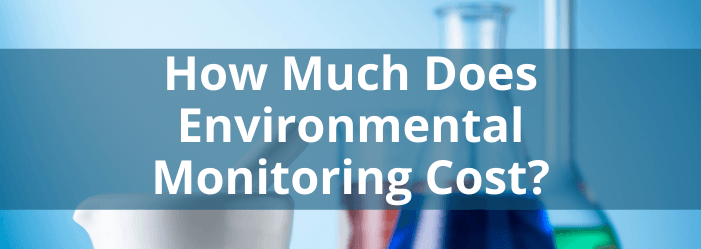
There is no single price when it comes to determining the cost of environmental monitoring services. You have to remind yourself, what are the types of environmental monitoring?
Because the federal government mandates certain tests depending on your industry, costs can fluctuate. More than one test could dramatically increase the price you pay.
In general, the cost of environmental monitoring services can easily exceed $10,000 in a single year, with a small facility.
The factors affecting price include hazard evaluation and determining if an environment has already been exposed to bacteria before production.
Environmental pathogens can also increase costs, because preventative control must be done before setting up the facility.
How frequent specific surfaces must be cleaned is also crucial. Depending on the equipment used, furniture, or tools, some must be cleaned more often than others.
Again, depending on the amount of federal mandates required for your industry and location, this can increase the costs of environmental monitoring microbiology. Unfortunately, more mandates will up the costs.
One of the most important aspects of developing an environmental monitoring strategy is to do research on the regulations required for your field of work.
Every location has different protocols depending on the facility in development. And once again ask yourself, what are the types of environmental monitoring?
Second is to perform cost planning. Research the size of a lab or location to be tested. This can help you determine what type of surface swabbing must be done, air quality testing, and any other forms of monitoring.
Planning the length of the environmental monitoring is also crucial since changes in microbial genetics must be measured overtime. Knowing the time spent watching environmental changes will help you know what type of microbiological testing service best fits your needs.
With extensive recalls occurring in recent months and growing outbreaks of food bacteria, it’s becoming more important to test for food product contamination. Food testing services can help you stay compliant with the FDA and ensure that your food is safe.
Our team of experienced microbiologists and chemists can perform tests necessary to abide by pharmaceutical production guidelines. Sure-BioChem’s pharma testing services include release testing, product validations, facility tests, and more.
The team of experts can provide you with peace of mind, performing water sample testing to ensure high quality drinking water. Our environmental testing services also include removing dangerous contaminants from water.
Again, there are many advantages to environmental monitoring microbiology services.
They have the ability to improve the quality of life for all our society while ensuring our work has a good relationship with the environment.
It takes a highly-trained team and a bulk of software to monitor the data and translate it into actionable insights. This type of work is crucial to advance projects and make sure citizens are informed of changes in the environment in a timely manner.
That is why Sure-BioChem’s team of experts help make the cost of environmental monitoring services worth it!
Simply choose your testing type and provide us with a detailed explanation of the methodology and parameters.







Interested in Working with
Sure-BioChem Laboratories
Sure-BioChem Laboratories offers top-notch analytical testing for various industries. Our advanced lab and expert team ensure reliable, quality results. We're committed to excellence, helping clients meet high standards in environmental, food, and pharmaceutical testing.
Headquarters:
1000 Atlantic Avenue
Camden, NJ 08104
PHONE: 888-398-7247
Main Menu